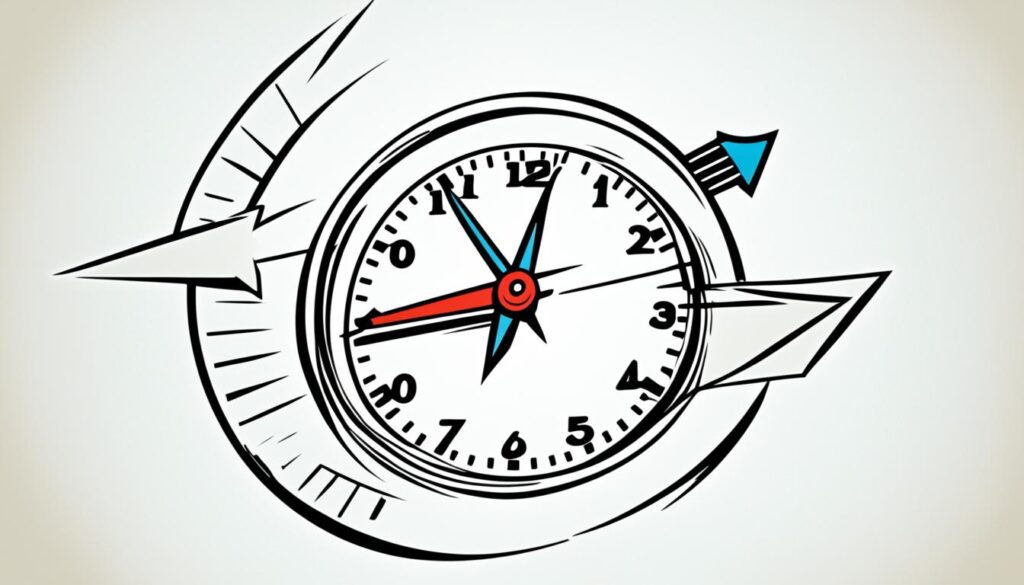When it comes to freelance work, writing a compelling proposal is crucial to attracting and securing clients. A well-written proposal can make all the difference in winning over clients and standing out in a competitive freelance market. In this article, we will provide you with seven effective strategies to improve your proposal writing skills and increase your chances of winning new clients.
Key Takeaways:
- Select the right template to make a strong first impression.
- Craft a convincing introduction that addresses the client’s problem and offers unique solutions.
- Provide a detailed account of the cost to build trust and transparency.
- Keep your proposal concise, positive, and engaging to capture the client’s attention.
- Give timelines and dates of completion to showcase reliability and project planning.
By following these strategies, you can create persuasive proposals that stand out from the competition and win you more freelance opportunities. Let’s dive into each strategy in detail to understand how you can enhance your proposal writing skills and win clients with your words.
Select the Right Template
In order to make a good impression with your proposal, it is important to choose the right template. Using preset templates can save you time and make the writing process more efficient. These templates are designed to be professional and visually appealing, and you can customize them to fit the specific needs of each proposal. By making use of these templates, you can ensure that your proposals have an organized structure and professional design, which will help you make a strong first impression on your clients.
When selecting a proposal template, consider the following factors:
- The nature of your proposal: Different proposals require different structures and formatting styles. Ensure that your template aligns with the type of proposal you are presenting, whether it’s for a business project, creative collaboration, or consultancy services.
- Customization options: Look for templates that offer customization options such as font styles, color schemes, and branding elements. This allows you to personalize the template and tailor it to your brand’s identity and the specific requirements of each proposal.
- Content sections: Check if the template includes predefined sections for crucial information such as an executive summary, scope of work, deliverables, and pricing. This ensures that all necessary elements are present in your proposal, making it comprehensive and easy to navigate for your clients.
By selecting the right template, you can create a professional-looking proposal that catches your client’s attention from the very beginning. Remember, first impressions matter, and a well-designed proposal template can help you make a positive impact.
Benefits of Using Proposal Templates
Using proposal templates offers several benefits for freelance professionals:
- Efficiency: Preset templates provide a solid structure for your proposal, saving you time and effort in formatting and layout design.
- Consistency: By using the same template for all your proposals, you can maintain consistency in your branding and ensure a standardized presentation across your client communications.
- Professionalism: These templates are designed by professionals with expertise in proposal writing, guaranteeing a polished and professional appearance that reflects the quality of your work.
- Flexibility: While templates provide a starting point, they can be easily customized to match your unique style, allowing you to showcase your creativity and adapt to different client requirements.
Overall, selecting the right template is an important step in creating a compelling proposal that stands out to potential clients. Utilizing preset templates not only streamlines the proposal writing process but also elevates the overall professionalism and impact of your proposals.
Craft a Convincing Freelance Introduction
The introduction of your proposal is the gateway to winning over clients. It serves as the first impression, so it’s crucial to capture their attention and interest right from the start. To craft a convincing introduction, you must effectively address the client’s problem, clearly state the purpose of your proposal, establish a personal connection by showing empathy and understanding, highlight the unique solutions you offer, and provide solid reasons why the client should choose you.
By conducting thorough research on your clients and their specific requirements, you can personalize your proposal to resonate with them. This personalized touch demonstrates your expertise in solving their problems and helps create a stronger connection.
For instance, imagine you’re a web designer presenting a proposal to a client experiencing difficulties with their outdated website. In your introduction, you could emphasize their pain points by acknowledging the challenges they face in attracting and retaining customers due to the outdated design. Moreover, you could showcase your understanding of their unique situation and offer a comprehensive solution tailored specifically to their needs.
“We understand the frustration of having an outdated website that fails to captivate customers, hindered by slow loading times and an obsolete user interface. That’s why our personalized proposal presents a unique solution that will not only enhance your online presence but transform it into a visually stunning platform that engages your target audience and drives conversions.”
By taking the time to address the client’s problem, demonstrate your understanding, and emphasize your unique approach, you can create a compelling introduction that immediately captures the client’s attention and sets the stage for a successful proposal.

Provide a Detailed Account of the Cost
When it comes to creating a winning proposal, providing a detailed account of the cost is paramount. Clients want transparency and clarity when it comes to pricing. By breaking down the proposal cost and including a comprehensive overview of all expenditures, including service charges and any potential unforeseen costs, you demonstrate professionalism and build trust with your clients.
Transparency in pricing is crucial as it allows clients to make informed decisions based on their budget and requirements. By clearly outlining the costs involved, you enable clients to assess the value of your services and determine if they align with their needs.
Here is an example of how you can structure your proposal’s cost breakdown:
| Service | Cost |
|---|---|
| Service A | $X |
| Service B | $Y |
| Service C | $Z |
| Service D | $W |
| Total | $Total Amount |
By providing clients with a comprehensive breakdown of the proposal’s cost, you demonstrate your attention to detail and professionalism. It also helps clients understand the value they can expect from your services.
Remember, at the core of a successful proposal is the ability to clearly communicate the financial aspect of your services. Providing a detailed account of the cost ensures a transparent and mutually beneficial partnership with your clients.
Key Points:
- Transparency in pricing builds trust and fosters client confidence.
- Detailed expenditure breakdown enables clients to make informed decisions.
- Including service charges and potential costs demonstrates professionalism.
Keep it Short, Positive, and Engaging
When it comes to writing a winning proposal, brevity is key. Clients don’t want to spend their valuable time reading lengthy and mundane documents. Instead, they want concise and impactful proposals that quickly communicate how you can solve their problems. By keeping your proposal focused and to the point, you will grab their attention and demonstrate that you respect their time.
But being concise doesn’t mean being boring. Use positive language that instills confidence and excitement in your clients. Show them that you are enthusiastic about working with them and are committed to delivering exceptional results. Through your words, create a sense of optimism and anticipation, igniting their interest in what you have to offer.
Engaging your clients is crucial to maintaining their attention throughout your proposal. Use captivating language that paints a vivid picture of the benefits they will experience by choosing your products or services. Craft compelling narratives that clearly showcase the value you bring and how you will address their needs. Make it personal by tailoring your proposal to their specific requirements, demonstrating your understanding and expertise.
Quotes:
“This proposal will revolutionize your business, delivering unparalleled growth and success. Our innovative solutions are designed to maximize your profitability and ensure a competitive edge in the market.”
“With our streamlined approach and cutting-edge technology, we guarantee an efficient and seamless experience. Say goodbye to cumbersome processes and hello to a brighter future filled with exponential growth and endless possibilities.”
By striking the right balance between brevity, positivity, and engagement, you can create a proposal that captivates your clients and compels them to take action. Remember, your words have the power to win hearts and secure lucrative opportunities. So choose them wisely and let your proposal be a testament to your passion and expertise.
| Key Points | Benefits |
|---|---|
| Concise and impactful | Respect for client’s time and attention |
| Positive language | Instills confidence and excitement |
| Engaging proposals | Captivating clients and showcasing value |
Give Timelines and Dates of Completion
When preparing a proposal, it is crucial to include timelines and dates of completion. This not only instills confidence in your clients but also demonstrates your commitment to delivering projects on time. By providing a comprehensive timeline that outlines all the key activities and milestones, you can showcase your meticulous project planning and reliable delivery. Moreover, aligning your proposal with any upcoming events or deadlines the client may have allows you to exhibit your flexibility and ability to accommodate their specific needs.
Sample Timeline:
| Activity | Completion Date |
|---|---|
| Initial consultation and project scoping | August 15, 2022 |
| Research and data analysis | August 22, 2022 |
| Development of project deliverables | September 5, 2022 |
| Client review and feedback | September 12, 2022 |
| Final revisions and quality assurance | September 19, 2022 |
| Project completion and delivery | September 26, 2022 |
The above sample timeline demonstrates a clear and organized plan for project completion. By providing specific dates, you can manage client expectations and allow them to plan accordingly based on the proposed timelines. It also reflects your professionalism, attention to detail, and commitment to delivering high-quality work within the agreed-upon timeframe.
By incorporating timelines and dates of completion into your proposal, you ensure transparency and provide clients with a reliable roadmap of the project’s progress. This helps build trust and confidence in your abilities as a service provider, making your proposal more compelling and increasing the likelihood of securing the project.

Reach Out for the Next Steps
After presenting your compelling proposal, it’s crucial to guide the client toward the next steps in the process. By providing clear instructions and opportunities for action, you can ensure that your proposal doesn’t get forgotten. Here are some key actions you can include in this section:
- Call-to-Action: Encourage clients to take immediate action by including a definitive call-to-action. This could involve signing up on a dedicated website, contacting you via email or phone, or scheduling a meeting.
- Sign-up Process: If applicable, provide a website address or link where clients can easily sign up for your services. Make the sign-up process intuitive and straightforward, ensuring a smooth transition from proposal to engagement.
- Payment Options: Offer clients clarity on payment options by explicitly mentioning accepted methods and any required deposits or advanced payments. This transparency builds trust and streamlines the onboarding process.
By incorporating these next steps into your proposal, you encourage clients to take action and move forward with your business. This proactive approach demonstrates your professionalism and commitment to delivering a seamless client experience.
“The best way to predict the future is to create it.” – Peter Drucker
| Action | Description |
|---|---|
| Call-to-Action | An explicit instruction inviting clients to take the next step, such as signing up or contacting you. |
| Sign-up Process | Provide a website address or link where clients can easily sign up for your services, ensuring a seamless onboarding experience. |
| Payment Options | Clearly outline accepted payment methods and any necessary deposits or advanced payment arrangements. |
Mention Terms and Conditions
Transparency and clarity are crucial when it comes to proposal writing. By clearly stating your terms and conditions, you establish trust with the client and prevent any potential misunderstandings or conflicts in the future. Clearly articulating your expectations and what the client can expect from you helps set a solid foundation for the working relationship.
When mentioning terms and conditions in your proposal, consider including:
- Payment terms: Specify the payment schedule, accepted payment methods, and any late payment penalties.
- Cancellation policy: Outline the conditions under which either party can cancel or terminate the agreement.
- Intellectual property: Define ownership and usage rights of any intellectual property created during the project.
- Confidentiality: Highlight your commitment to maintaining client confidentiality and protecting sensitive information.
- Scope of work: Clearly define the scope of the project, including deliverables, timelines, and any limitations.
- Dispute resolution: Provide a process for resolving any disputes that may arise during the project.
Table: Proposal Terms and Conditions
| Term | Description |
|---|---|
| Payment Terms | Specify the payment schedule, accepted payment methods, and any late payment penalties. |
| Cancellation Policy | Outline the conditions under which either party can cancel or terminate the agreement. |
| Intellectual Property | Define ownership and usage rights of any intellectual property created during the project. |
| Confidentiality | Highlight your commitment to maintaining client confidentiality and protecting sensitive information. |
| Scope of Work | Clearly define the scope of the project, including deliverables, timelines, and any limitations. |
| Dispute Resolution | Provide a process for resolving any disputes that may arise during the project. |
By including your terms and conditions upfront, you demonstrate professionalism, transparency, and a commitment to meeting client expectations. This clear communication ensures a smooth working relationship and increases the likelihood of securing the project.
Conclusion
Effective proposal writing is an essential skill for freelancers who want to win clients and stand out in a competitive market. By incorporating the strategies outlined in this article, such as selecting the right template, crafting a convincing introduction, providing a detailed account of the cost, keeping the proposal short and engaging, giving timelines and dates of completion, reaching out for next steps, and mentioning terms and conditions, you can greatly enhance your proposal writing abilities.
Remember that a well-written proposal can make a significant difference in securing new clients and showcasing your expertise. By choosing the right template, you can create a professional and visually appealing proposal that captures the attention of potential clients right from the start. A convincing introduction tailored to the client’s problem and offering unique solutions will demonstrate your understanding and expertise. Providing a detailed account of the cost and being transparent about your pricing will build trust with clients, while keeping the proposal concise and engaging ensures they can quickly assess the benefits you offer.
Additionally, including timelines and dates of completion, as well as clear next steps and terms and conditions, strengthens your proposal’s professionalism and functionality. By concluding your proposal with a clear call-to-action, you prompt clients to take the next step and move forward with your services.
By successfully implementing these strategies, you will be on your way to writing winning proposals that set you apart from the competition and attract new clients to your freelance business.
FAQ
How can I improve my proposal writing skills?
By following the seven effective strategies mentioned in this article, you can improve your proposal writing skills and increase your chances of winning new clients.
Why is selecting the right template important for my proposal?
Choosing the right template can save you time and make your proposal more efficient. It ensures a professional and visually appealing design, making a strong first impression on your clients.
How can I craft a convincing introduction in my proposal?
To create a convincing introduction, address the client’s problem, state the purpose of your proposal, establish a personal connection, highlight your unique solutions, and provide solid reasons why the client should choose you.
What should I include when providing a detailed account of the cost in my proposal?
You should break down all the expenditures involved, including service charges and any other costs. Being transparent about pricing demonstrates professionalism and helps the client assess whether your services fit within their budget.
How can I keep my proposal short, positive, and engaging?
Keep your proposal focused on the essential details, use positive and engaging language, and highlight the benefits of your products or services. Maintaining authenticity and staying true to your brand is important.
Why is it important to give timelines and dates of completion in my proposal?
Including timelines and dates shows clients that you have a clear plan to complete the project on time. It demonstrates your reliability and ability to deliver as promised, instilling confidence in the client.
How can I guide the client towards taking action in my proposal?
Including a section detailing the next steps, such as providing a website address, offering payment options, or contact information, encourages the client to take action and move the proposal forward.
Why should I mention terms and conditions in my proposal?
Clearly stating your terms and conditions helps establish trust with the client, prevents potential misunderstandings, and sets a solid foundation for the working relationship.




